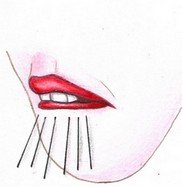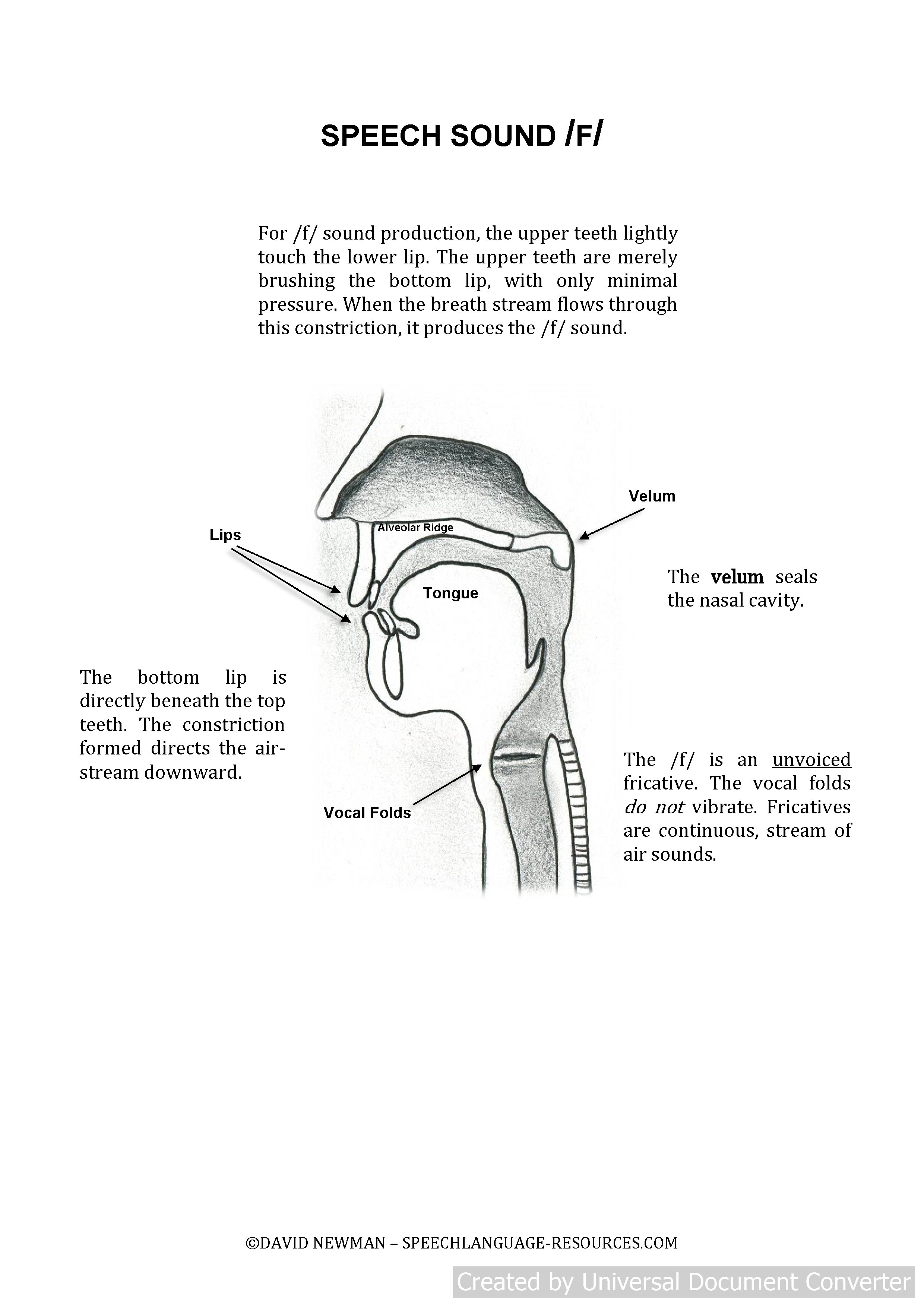Speech Therapy f Sound

Speech Therapy f Sound: The /f/ sound is a stream of air (fricative) sound. The /f/ is voiceless. That is, the larynx does not vibrate as it does on its voiced partner, the /v/ sound. To produce a clear /f/ sound the upper teeth lightly touch the lower lip.
To an observer, the impression is that the bottom lip is being bitten by the exposed upper teeth. However the upper teeth are merely touching the bottom, with only minimal pressure. When the breath stream flows through this constriction it produces the /f/ sound. Due to the constriction formed by the teeth and lips, the breath stream is directed forward and down.
Speech Therapy f Sound - Sound Errors
A common sound substitution for the /f/ is the voiced /b/. So fish becomes bish. The unvoiced sound partner to the /b/ sound, the /p/ sound is also a common sound error. The /f/ becomes /p/ - fish becomes pish.
How to stimulate the /f/ sound
Demonstrate the characteristics of correct /f/ production to your child.
For correct /f/ sound production, the lower part of the upper teeth con-tact the lower lip.
The air-stream passes through the narrow gap that exist between the up-per teeth and the lower lip and heads downward.
Speech Sound Structures - /f/ Sound
Click on image to download speech sound structures for /f/
Speech Therapy f Sound - How to Stimulate the /f/ Sound
Work through the following procedures with your child.
- Demonstrate to the child what a typical /f/ looks and sounds like. Do this by retracting the edges of your lips in the semblance of a slight smile. The upper teeth should be a little exposed and slightly touching the top of the bottom lip. Blow the breath stream through the constriction created by the top teeth resting on the bottom lip.
- After demonstrating the correct position of the tongue and teeth, encourage your child to raise his bottom lip so that it is just slightly touching the upper teeth. It can be helpful to use a small mirror at this point to give the child a visual reference as to where his bottom lip needs to be positioned.
- Next, instruct the child to blow air over his bottom lip. It can also be helpful for the child to position his/her finger in front of the lips to feel for the direction of the breath stream as it passes through the constriction created by the upper teeth and bottom lip.
Speech Therapy f Sound - How to Sculpt the f Sound from other Speech Sounds
Many speech sounds can be sculpted using other speech sounds as a starting point. This involves altering or adjusting speech sounds so that they approach the target sound in nature. This works by the clinician modeling a sound that the child is able to produce. The clinician then makes slight, progressive adjustments to the sound until the target sound is generated.
Sound sculpting from the /p/ sound
- The /f/ sound can be formed from the /p/ sound. We do this by bringing our lips together for the /p/ sound. The lips are opened slightly and air blown over the top of the bottom lip.
- Instruct your child to slowly withdraw the bottom lip while continuing to blow air in the gap created between the upper top teeth and the lower lip.
Sound sculpting from the /h/ sound
- The /f/ sound can also be formed from the /h/ sound. The /h/ sound is made with the lips apart and a sustained air-stream. Instruct your child to first sustain the /h/ sound and then bring the lips slowly together.
Updated 03/08/2020

